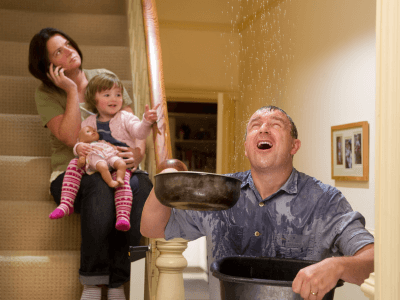
Fix Leaky Hose Pinellas County | 5 Quick Repair Tips
A leaky hose connection can be a frustrating problem, leading to wasted water, increased water bills, and potential damage to your property. Fortunately, fixing a leaky hose connection is a relatively simple DIY task that can be completed with just a few tools and materials. In this guide, Saint Pete Plumbing will walk you through the steps to identify and repair a leaky hose connection, allowing you to enjoy a leak-free watering experience in no time.Step 1: Identify the Source of the Leak
Before you can fix the leak, it’s essential to identify the source of the problem. Leaks in hose connections typically occur at one of the following locations:Hose Faucet Connection:
Check the connection between the hose and the outdoor faucet (spigot) for any signs of dripping or spraying water.Hose Coupling:
Inspect the coupling or connector where two sections of hose are joined together for leaks or damage.Hose Nozzle:
Examine the nozzle or sprayer attachment for any cracks, holes, or worn-out seals that may be causing the leak.Step 2: Tighten the Connections
In many cases, a leaky hose connection can be fixed simply by tightening the connections. Follow these steps to tighten the connections properly:Turn Off the Water:
Before you begin, turn off the water supply to the hose by shutting off the outdoor faucet or water valve.Loosen the Connection:
Use a wrench or pliers to loosen the coupling nut or collar connecting the hose to the faucet or nozzle.Reposition the Washer:
Check the rubber washer inside the coupling for any damage or wear. If the washer appears worn or flattened, reposition it or replace it with a new one.Tighten the Connection:
Once the washer is in place, reattach the hose to the faucet or nozzle and tighten the coupling nut or collar securely with the wrench or pliers.Step 3: Replace the Washer
If tightening the connections doesn’t solve the problem, the rubber washer inside the hose coupling may be damaged or worn out. Follow these steps to replace the washer:Turn Off the Water:
As before, start by turning off the water supply to the hose.Remove the Washer:
Use a flathead screwdriver or a small pick to remove the old rubber washer from inside the hose coupling.Select a New Washer:
Choose a new rubber washer of the same size and shape as the old one. Rubber washers are available at most hardware stores and home improvement centers.Install the New Washer:
Insert the new rubber washer into the hose coupling, making sure it fits snugly and forms a tight seal.Tighten the Connection:
Reattach the hose to the faucet or nozzle and tighten the coupling nut or collar securely with the wrench or pliers.Step 4: Seal with Plumbing Tape (Teflon Tape)
If the leak persists after replacing the washer, you can use plumbing tape, also known as Teflon tape, to create a watertight seal. Follow these steps to seal the hose connection with plumbing tape:Turn Off the Water:
Once again, turn off the water supply to the hose.Wrap the Threads:
Starting at the end of the hose or faucet threads, wrap several layers of plumbing tape clockwise around the male threads. Be sure to overlap each layer slightly to ensure a tight seal.Apply the Tape Evenly:
Continue wrapping the threads until they are completely covered with tape, ensuring that the tape is applied evenly and without any gaps.Reattach the Hose:
Once the threads are wrapped with plumbing tape, reattach the hose to the faucet or nozzle and tighten the coupling nut or collar securely with the wrench or pliers.Step 5: Check for Leaks and Test the Connection
After completing the repair, turn the water supply back on and check for any signs of leaking or dripping water. If the connection appears to be leak-free, test it further by turning the hose nozzle on and off and adjusting the water flow. Monitor the connection closely for any signs of leakage or spraying water.Additional Tips for Preventing Leaks
To prevent future leaks and prolong the life of your hose connections, consider implementing the following preventive measures:Avoid Over-Tightening:
While it’s important to tighten hose connections securely, avoid over-tightening, as this can damage the threads or rubber washers and lead to leaks.Protect the Hose:
Store your hose properly when not in use to prevent kinks, bends, and damage to the coupling or nozzle.Replace Old Hoses:
If your hose is old, cracked, or damaged beyond repair, consider replacing it with a new one to prevent leaks and ensure reliable water flow.Use Quality Components:
Invest in high-quality hoses, couplings, and nozzles made from durable materials to minimize the risk of leaks and prolong the lifespan of your watering equipment.Conclusion
Fixing a leaky hose connection is a simple and straightforward DIY task that requires minimal time and effort. By following the steps outlined in this guide from Saint Pete Plumbing, you can identify the source of the leak and implement the necessary repairs to restore your hose connection to proper working condition. Remember to check for leaks regularly and perform preventive maintenance to ensure your hose connections remain leak-free and reliable for years to come. With these tips, you can enjoy hassle-free watering and gardening without the worry of wasted water or potential water damage to your property.
Contact us today for a quote and let us handle all your plumbing needs. Email us at services@saintpeteplumbing.com





